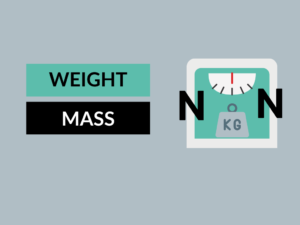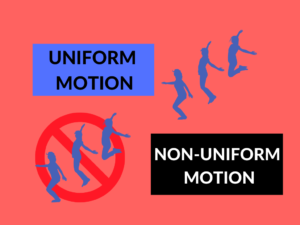Difference between Centre of Mass and Centre of Gravity
What is the Centre of Mass?
The center of mass is the point in an object or system that behaves as if all the mass is concentrated at that point. It is the average position of all the parts of the system, weighted according to their masses.
Examples of Centre of Mass:
- A uniform rod
- A uniform sphere
What is the Centre of Gravity?
The center of gravity is the point in an object or system where the total weight of the object or system can be considered to act.
Examples of Centre of Gravity:
- A hanging object
- A suspended beam
Differences between Centre of Mass and Centre of Gravity:
| Point of Difference | Centre of Mass | Centre of Gravity |
|---|---|---|
| Definition | The average position of all the parts of a system, weighted by their masses | The point where the total weight of an object or system is considered to act |
| Location | Depends on the distribution of mass within the system | Depends on the distribution of weight within the system |
| Application | Used in physics, engineering, and biomechanics to analyze the equilibrium and motion of objects | Used in engineering and physics to analyze the stability and balance of objects |
| Uniform Object | Centre of mass and center of gravity coincide | Centre of gravity coincides with the center of mass only if the gravitation field is uniform |
| Non-Uniform Object | Centre of mass takes into account mass distribution within the object | Centre of gravity takes into account the distribution of weight within the object |
| Multiple Objects | Centre of mass can be calculated for a system of multiple objects | Centre of gravity can be calculated for a system of multiple objects |
| Position | The centre of mass does not necessarily lie within the physical boundaries of the object | The centre of gravity does not necessarily lie within the physical boundaries of the object |
| Rotation | The centre of mass remains fixed during translational and rotational motion | The centre of gravity remains fixed during translational motion, but changes during rotational motion |
| Equilibrium | A system is in equilibrium when the centre of mass is stationary | A system is in equilibrium when the centre of gravity is directly above the base of support |
| Mathematical Representation | Mathematically represented by the average of mass positions | Mathematically represented by the sum of weight positions |
Conclusion:
In summary, the centre of mass and the centre of gravity have similar concepts but differ in their definitions, locations, applications, and behaviors in various conditions.
Knowledge Check:
- Which point represents the average position of all parts of a system?
- Which point represents the total weight acting on an object or system?
- Do the centre of mass and centre of gravity coincide for uniform objects?
- Which point changes during rotational motion?
- When is a system considered to be in equilibrium with respect to the centre of mass?
- The centre of mass takes into account the distribution of ______ within an object.
- Which point remains fixed during translational and rotational motion?
- Is the centre of mass always located within the physical boundaries of an object?
- Which point is used to analyze the stability and balance of objects?
- The centre of gravity depends on the distribution of ______ within the system.
a) Centre of Mass b) Centre of Gravity
a) Centre of Mass b) Centre of Gravity
a) Yes b) No
a) Centre of Mass b) Centre of Gravity
a) When the centre of mass is stationary b) When the centre of mass is moving
a) Mass b) Weight
a) Centre of Mass b) Centre of Gravity
a) No b) Yes
a) Centre of Mass b) Centre of Gravity
a) Mass b) Weight
Related Topics:



